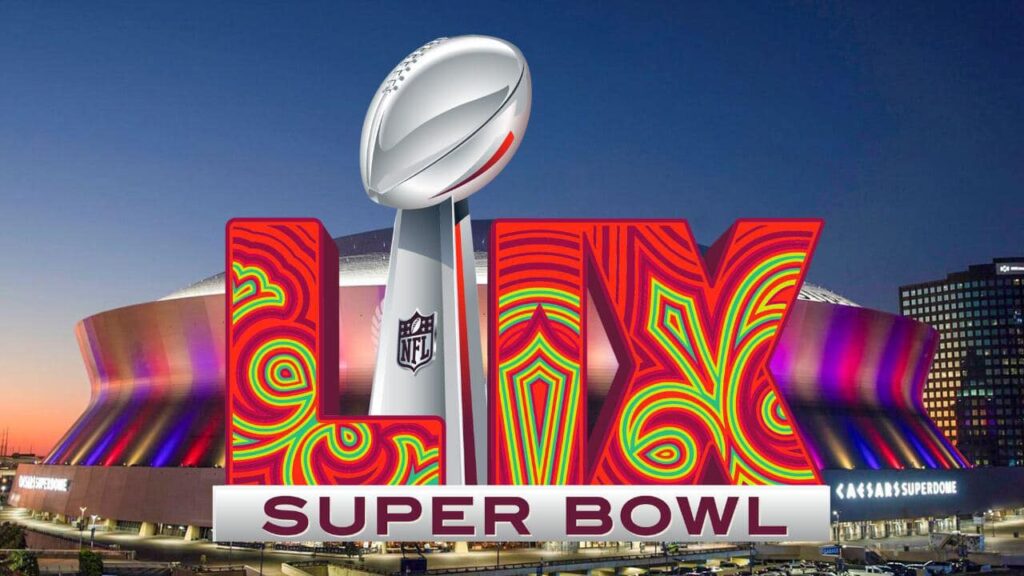Why the numbers count: Why the US and Europe are on divergent paths on sports rights
February 5, 2025
In this week’s Member Insights, Ian Whittaker, Twice City AM Analyst of the Year spotlights on why the numbers count.
The LIX Superbowl between the Kansas City Chiefs and Philadelphia Eagles takes place on February 9th and, for rights holders Fox, there has been an impressive last-minute rush for the valuable 30-second slots. After a number of advertisers pulled out – including insurer State Farm, which had been criticised for its response to the wildfires in Southern California – Fox has reportedly sold a dozen 30-second slots for at least $8 million. Given the general consensus had been that the previous $7 million price per slot was probably the peak, it is an impressive achievement, especially given NFL viewing figures this season have seen a dip and advertisers generally are pulling money from television. The temptation would be to say that the story proves the power of sports continues to grow.
However, what is happening on the other side of the Atlantic should act as a cautionary tale. There is increasing speculation that DAZN, which controls the bulk of the French Ligue 1 football rights, will pull out of its €400m per annum deal (or, at least, look to significantly renegotiate the terms). DAZN has an option to exit the deal if it does not reach 1.5m subscribers by December 2025 and, with its subscriber numbers only at the 500,000 mark, the chances are it will not meet its target. That puts a serious question, to say the least, over the future of Ligue 1.
So which story is the more typical, the positive or the negative one? That depends on where you look.
Much has to do with geography. There is a noticeable difference between the US and Europe. The US market for sports rights has seen spectacular rights inflation over the past several years not just in the marquee sports such as the NFL and NBA but also what might be termed second-tier sports such as WWE and UFC, which is looking to more than double its current media rights haul. In Europe, the picture has been a lot more mixed and, even where there has been an increase in the absolute amount of money paid – as in the new English Premier League rights deal signed in December 2023, the cost per game shown has seen deflation.
However, the real reason is the relative interest – and strength – of the buyers and, more importantly, why they are buying. In the US, the rights inflation has been driven by the major Tech companies such as Amazon and YouTube and the reason is clear. They see live sports as the way to get their hands on lucrative TV advertising revenues. Live sports dominate live TV viewing. In 2024, 70 of the top 100 most watched live TV programmes in the US were NFL games and that was in a year when there was fierce competition from both the Olympics and the US Presidential elections. The Tech giants have money, lots of money and they can afford to bet big because the rewards are so huge if they get it right (and not just in terms of advertising: a key reason why Netflix smashed subscriber expectations for Q4 was very likely to be the two Christmas Day NFL games, which boosted its share price significantly). Moreover, the potential rewards can justify the cost.
In Europe, though, the Tech buyers are largely absent. Those that did invest in football rights, such as Amazon, then backed out when the rights came up for renewal. Why? Simply because the numbers do not work and are very unlikely to ever work to justify their investment. There is no huge pot of advertising money to be captured and the Tech giants have no interest in building up alternative Pay-TV platforms. Instead, it is left to legacy Pay-TV and Telco companies to buy up the rights – companies whose revenue growth is limited, whose main priorities are to limit their spend and who operate in Pay-TV markets which, in Western Europe, see very modest growth at best and, more likely, stagnation. DAZN was seen as a possible major hope but its recent actions suggest that hope is misguided.
What does that mean for the traditional rights model in Europe when it comes to football rights? Put simply, the Tech cavalry is not coming. So either the rights holders have to live and adjust to a market where there is limited growth or they need to change their monetisation strategies moving forwards.
As usual, this is not investment advice.



